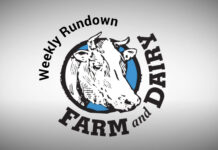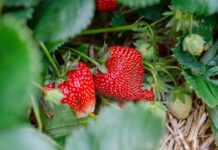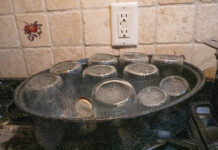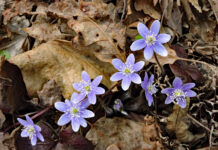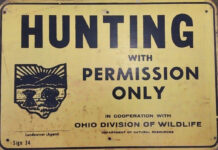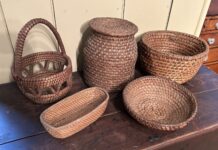You are probably wondering why I’m wondering if you know the whereabouts of your livestock. Of course, we hope they’re still in the field we put them into last.
But where are they in relationship to how much usable forage remains in the paddock they’re currently in? Will there be enough forage for them to consume if you leave them where they are for another four hours, maybe another day or how about two or three more days or maybe even a week?
How do you determine when to move your livestock to new grass? Is there new grass to move to, or do your animals have access to all your pasture area at once?
Management-intensive grazing
Maintaining healthy forage plants is what we try to accomplish using management-intensive grazing or rotational grazing. This is accomplished by placing livestock in specific areas for selected amounts of time and then moving them to the next area.
The forage plants become healthier because the residual forage height is monitored and controlled, and adequate rest and re-growth periods are adhered to before the manager turns livestock into the forage again. Greater quantities of forage can be grown per acre because healthy plants develop larger root systems to support more top growth.
If you notice in the term management-intensive grazing, the hyphen is placed between management and intensive and not between intensive and grazing. This is because when we implement management-intensive grazing strategies, we are focusing on the management aspect. It may require more of your time during the planning and implementation process, but the result of stronger forage systems can be one of the rewards.

The photo (figure 1) shows root development of four different forage plants. Plants one and two on the left have small, weak root systems. These are similar to forage plants that are continuously grazed and never provided a rest and re-growth period. Plants three and four on the right in the photo represent plants where minimum grazing height restrictions are maintained and adequate rest periods observed before re-grazing. The minimum grazing height to aim for is 3 to 4 inches.
If we allow grazing to occur below that, we are creating a situation with two consequences.
One, most parasites are found in the lower two inches of growth, keeping our grazing residue above that minimizes parasite loads. Two, we are allowing the forages to recover for regrowth. As you can see, root structure is significantly different. This clearly shows why plants in continuously grazed pastures suffer moisture and nutrient deficiencies more quickly than plants in properly used rotational grazing systems.
Also, plants on the left do not shade the ground to conserve moisture from evaporation loss during dry summer months as well as those on the right. Subsequently, less growth and dry matter are produced per acre and a lower stocking rate is the only feasible alternative.
Environmental benefits
Good rotational management does more than maintain healthy forage plants, the environment benefits too. Less surface water runoff and erosion take place when more water infiltrates the root zone. Nutrient recycling is improved, and more organisms can live in the soil, enhancing soil quality. Microorganisms improve uptake of nutrients by the plant, allowing plant development to proceed faster.
Earthworm populations also increase when management practices promote healthy plant growth. This, too, is good for the soil and the plants. Bill Murphy, author of “Greener Pastures On Your Side Of The Fence” wrote, “When earthworm excrement (casts) is compared to the top 6 inches of soil, the excrement contains five times more nitrate nitrogen, twice as much calcium, almost three times more magnesium, seven times more phosphorus, and 11 times more potassium than the soil.”
Earthworms aerate and loosen the soil, incorporate dead surface material into the soil where it decomposes to increase soil organic matter, and earthworms break down manure quickly to recycle those nutrients back to the plant roots.
Worth the work
Do you see a progressive system taking place here? Each step builds on the other. You are the one who can make these changes come about. You can change your management practices, implement plans to maintain healthy, vigorously growing plants in your paddocks and receive the step-by-step benefits other graziers are seeing. The choice is yours.
Yes, constant adjustments do need to be made to account for changing and unpredictable weather conditions, and planning ahead 3 to 5 weeks or even further is not uncommon in the grazier’s mind. This is how you provide continuous high-quality forage in adequate amounts for the livestock to eat throughout the year, but you can do it.
Next step
If you are already rotating your livestock, ask yourself what is the next step that could increase production or decrease costs? Is it feasible? Good graziers continually make decisions, but its after they have asked themselves these questions.
Another thought
Are you planning to stockpile forage in any areas for winter grazing 6 to 8 months from now? Correctly using stockpiled forages is one of the best options a livestock manager has to reduce costs and be as profitable in their operation as they can be.
If you want to stockpile forage, the paddocks you plan to use should have recently been grazed or be the ones your livestock are soon going to graze. This would allow for one more rotation to be made in August then stockpiling could begin. Or maybe your plans are to wait and harvest the forage from the area to be stockpiled with mechanical equipment in early August.
Whatever method you choose, you should be planning it now to maintain adequate plant rest periods for that area before stockpiling begins.
Starting to stockpile forages in mid-August generally provides the best combination of quality and quantity of forage for most of our Ohio producers when they use pastures or hay fields for this purpose. However, a key factor in growing good quantities of grass for stockpiling is to have strong healthy plants.
If you want to reduce your livestock’s feed cost, increase your stocking rate per acre, or just make the environment on your farm better, “knowing where your livestock are” is the way you can make a difference.


